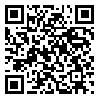1. Schmidt RA, Lee T. Motor control and learning: Human kinetics; 1988.
2. Gibson JJ. The ecological approach to visual perception: classic edition: Psychology Press; 2014 [
DOI:10.4324/9781315740218]
3. Schmidt RA, Lee T. Motor control and learning: Human kinetics; 1988.
4. Gibson JJ. The ecological approach to visual perception: classic edition: Psychology Press; 2014. [
DOI:10.4324/9781315740218]
5. McCullagh P, Meyer KN. Learning versus correct models: Influence of model type on the learning of a free-weight squat lift. Research Quarterly for Exercise and Sport. 1997;68(1):56-61. [
DOI:10.1080/02701367.1997.10608866]
6. Dana.amir RsHj. The effect of an observational practice period on learning of vally babminton service. Australian Journalof basic and applied sciences. 2011.
7. Martineau B, Mamede S, St-Onge C, Rikers RM, Schmidt HG. To observe or not to observe peers when learning physical examination skills; that is the question. BMC medical education. 2013;13(1):1. [
DOI:10.1186/1472-6920-13-55]
8. Martens R, Burwitz L, Zuckerman J. Modeling effects on motor performance. Research Quarterly American Alliance for Health, Physical Education and Recreation. 1976;47(2):277-91. [
DOI:10.1080/10671315.1976.10615372]
9. Zetou E, Tzetzis G, Vernadakis N, KIOUMOURTZOGLOU E. Modeling in learning two volleyball skills. Perceptual and motor skills. 2002;94(3c):1131-42. [
DOI:10.2466/pms.2002.94.3c.1131]
10. Holmes P, Calmels C. A neuroscientific review of imagery and observation use in sport. Journal of motor behavior. 2008;40(5):433-45. [
DOI:10.3200/JMBR.40.5.433-445]
11. Starek J, McCullagh P. The effect of self-modeling on the performance of beginning swimmers. Sport Psychologist. 1999;13:269-87. [
DOI:10.1123/tsp.13.3.269]
12. Dowrick PW. A review of self modeling and related interventions. Applied and preventive psychology. 2000;8(1):23-39. [
DOI:10.1016/S0962-1849(99)80009-2]
13. Dowrick PW, Raeburn JM. Self-modeling: Rapid skill training for children with physical disabilities. Journal of Developmental and Physical Disabilities. 1995;7(1):25-37. [
DOI:10.1007/BF02578712]
14. Drazin D. The use of self-modeling to improve motor performance (golf). Dissertation Abstracts International. 1985;46(B):946.
15. Winfrey ML, Weeks DL. Effects of self-modeling on sf-efficacely and balance beam performance. Perceptual and motor skills. 1993;77(3):907-13. [
DOI:10.2466/pms.1993.77.3.907]
16. Martini R, Rymal A, Ste-Marie DM. Investigating self-as-a-model techniques and underlying cognitive processes in adults learning the butterfly swim stroke. Int J Sport Sci Eng. 2011;5:242-56.
17. Determining the effect of learning pattern intervention, self-modeling on crawl swimming performance in semi-beginners. Thesis of Shahid Beheshti University. 2015.1-156
18. Parvinpour,the effect of dyad training on learning front crawl swimming. tehran university. 2013 .1-163
19. Clark SE, Ste-Marie DM. The impact of self-as-a-model interventions on children's self-regulation of learning and swimming performance. Journal of Sports Sciences. 2007;25(5):577-86. [
DOI:10.1080/02640410600947090]
20. Bandura A. Self Eflicacy. The Exercise of Control, New York: W H. Freeman & Co Student Success. 1997;333:48461.
21. Bandura A, McClelland DC. Social learning theory. 1977.
22. Hosford RE. Self-as-a-model: A cognitive social learning technique. The Counseling Psychologist. 1980. [
DOI:10.1177/001100008000900113]
23. Coulson SE, Adams RD, O'Dwyer NJ, Croxson GR. Use of video self-modelling and implementation intentions following facial nerve paralysis. International Journal of Therapy & Rehabilitation. 2006;13(1). [
DOI:10.12968/ijtr.2006.13.1.21349]
24. Bandura A. Toward an agonic theory of the self. In H. W. Marsh, R. G. Craven, &D. M. McInerney Eds.,. Self- processes, learning, and enabling human potential:Dynamic new approaches (pp 15 - 49) Charlotte, NC: Information Age Publishing. 2008.

 ، شهاب پروین پور2
، شهاب پروین پور2 
 ، سعید ارشم2
، سعید ارشم2 








